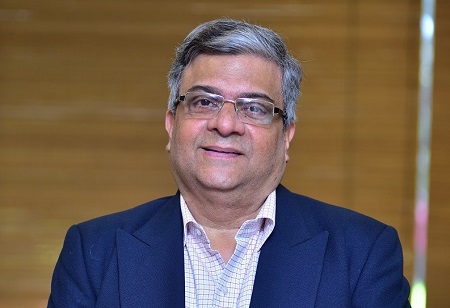
<i><b>Xercsis Marker, Executive Vice President & Business Head, Godrej Lawkim Motors in an interaction with the Industry Outlook, shares his insights on the calibration services market and concerns pertaining to measurement uncertainty, correction of measurement bias, and more.
Calibration Services Market size is projected to reach USD 10.54 Bn by 2028. How do you see this market developing India? What are the factors propelling the growth?
The Indian calibration and repair services market offers significant revenue potential for service providers, as rising local demand attracts multinationals, resulting in unprecedented growth in this market. It is expected to reach INR 927Crs by 2025, driven by increased quality awareness, metrology adoption in manufacturing processes, and stringent regulations.
As a result, competition in India's calibration and repair services market is increasing, forcing participants to devise innovative strategies to maximise market performance.
Poor instrument precision or unsuspected day-to-day effects may result in standard deviations that are large enough to jeopardize the calibration. How can this problem be solved?
The best strategy before committing to a specific instrument is to estimate its precision in the environment of use for determining whether it is good enough for the requirement. An important point to consider, but one that is often overlooked, is that differences in responses from unsuspected daily effects can invalidate the analysis.
A plot of the calibration data aggregate may not reveal changes in instrument response from day-to-day. A plot of the data's fine structure that reveals all the regular differences in the calibration data is required.
Measurement Uncertainty is one of the more difficult tasks that calibration technicians have to assess. While it is difficult, the measurement of uncertainty is defining for so many variables, including pass or fail. How can the calibration lab analyze measurement uncertainty in a practical and profitable manner?
Every measurement contains some uncertainty; the question is how much uncertainty there is. To estimate measurement uncertainty, all calibration labs use the ISO Guide to the Expression of Uncertainty in Measurement (GUM).
The calculation of the Test Uncertainty Ratio (TUR) is an important application of measurement uncertainty. The use of proper reference standards is required prior to any calibration. TUR is the tolerance of the test measurement in relation to the uncertainty. The measurement uncertainty reported in a calibration certificate can specifically define the tolerance limit since it is the sum of all valid sources of error.
The calibration procedure, once established, relies on the instrument continuing to respond in the same way over time. If the system drifts or takes unpredictable excursions, the calibrated values may not be properly corrected for bias. How can the calibration measurements be properly corrected for bias?
If the system drifts or makes unexpected deviations amidst the calibration procedure, the calibrated values may not be properly corrected for bias, and depending on the direction of change, the calibration may degrade measurement accuracy even further. The calibration procedure should be combined with a statistical control procedure for the instrument to ensure that future measurements are properly corrected for bias.
How do you see the calibration market evolving in the future?
The Calibration service market has seen a significant shift in trend since the introduction of Mobile Calibration Lab services. The Mobile Calibration Van was born out of a requirement to maintain equipment during the COVID lockdown and has since evolved into a value-added service for the Calibration industry. It provides services at the customer's doorstep, making calibration more convenient than ever before.
After surveying our customers, we discovered that a large number of customers have difficulty sending their instruments for calibration, so we developed the Mobile Calibration Lab service. The mobile calibration unit by Godrej Lawkim Motors houses a range of calibration instruments and equipment as per the customer’s requirement offering up to 20 services on-the-go. This calibration service will be beneficial to our customers in the automotive, aerospace, and manufacturing industries to maintain precision in their critical measuring tools, which will eventually reduce the cost of maintenance and repurchase of equipment. It will also reduce the time and money spent on transporting the equipment from the site to the lab for calibration and ensure quicker augmentation of the equipment thus, making it cost-effective.
Mobile Calibration Lab is the future and we expect Mobile Calibration Vans to transform the way calibration services are offered across sectors in the next few years.
We use cookies to ensure you get the best experience on our website. Read more...